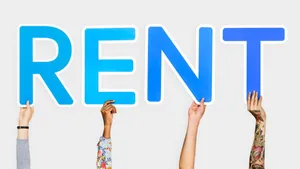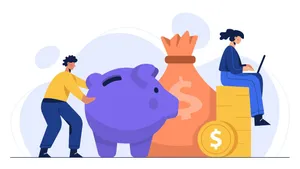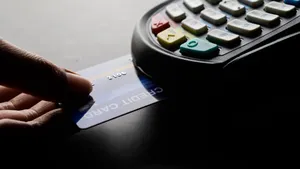You have high-interest debt. This debt often comes with a low credit score. You feel torn: Should you use your savings to build wealth, or should you stop the financial bleeding caused by debt?
You know you need to invest early to capture compounding growth. You also know that your high-rate debt works against you at a scary speed.
The data is clear: You must eliminate high-interest debt before you focus on building investment wealth. This is the fastest, safest way to earn a massive, guaranteed return on the money you save.
This guide gives you a simple, clear plan for your money.
The Interest Rate Test
Your choice—debt payoff versus investing—hinges on just one thing: the interest rate on your debt.
The Safe Return
The average credit card interest rate (APR) for people with low credit scores is over 27%. Paying off a 27% credit card guarantees you a 27% return on that money. This return carries no risk.
The stock market returns about 10% per year, historically speaking. This return is never guaranteed and comes with market volatility.
Financial experts draw a line in the sand at 10% APR.
| Your Debt’s APR | Your Financial Move | The Reason |
| Above 10% | Stop Investing. Pay the Debt. | The guaranteed savings (27%+) far outpace the market’s expected return (10%). |
| Below 5% | Invest. | You can likely earn a higher return in the market than the debt is costing you. |
| Between 5% and 10% | Use a Hybrid Approach. | Get your free money first, then balance debt payoff with investing. |
The Verdict: If your debt costs you more than 10%, every dollar you put into stocks means you are still losing money overall. First, you must remove the anchor.
The 4-Step Money Plan
For a new investor carrying high-interest balances, your financial road map should follow these protective steps:
Step 1: Build a Small Emergency Fund (Get Coverage)
You need a cushion of cash before you tackle any debt. If an unexpected bill arrives—a car repair or a medical expense—you will use your credit card and ruin your debt-payoff momentum.
- Action: Save $1,000 in a High-Yield Savings Account (HYSA). This money acts as your personal shield against minor disasters.
Step 2: Remove All High-Interest Debt (The Anchor)
This is your maximum guaranteed profit. You must use every dollar you can to attack debt above the 10% APR line.
- Action: Pay off credit cards and high-rate personal loans using the Debt Avalanche method (highest interest rate first). Your only investment during this period should be a small emergency fund.
Step 3: Capture Free Money (The 401(k) Match)
Once you eliminate the high-interest debt, you can start investing again, but only where the return is guaranteed.
- Action: Contribute to your employer's 401(k) only enough to get the full match. Your employer giving you free money is a guaranteed 50% or 100% return. This is too valuable to ignore, even if you still have lower-interest debt.
Step 4: Balance Investing and Low-Interest Debt
With the most expensive debt gone and the free money secured, you can now balance your priorities.
- Action: Split your extra cash. Use one part for aggressively paying off debts under 10% APR (like student loans). Use the other part to invest in low-cost index funds in your Roth IRA.
The Real Benefit (Your Credit Score)
Paying off debt is not just about math; it is about building a better financial future.
1. Mental Freedom
High-interest debt creates stress and anxiety. Eliminating it frees up your mind and creates control. This boost in mental health often outweighs any short-term stock market gain.
2. Boosting Your Credit Score
Paying down balances on credit cards dramatically improves your Credit Utilization Ratio (the percentage of available credit you use).
- The Benefit: A lower utilization ratio is the quickest way to raise a low credit score. A higher score saves you money for decades to come, lowering the interest rate on future mortgages and car loans.
Final Verdict
Your personal plan should be simple:
- Stop the bleed. Eliminate all debt costing you more than 10% per year.
- Get the free money. Contribute to your 401(k) for the employer match.
- Build wealth. Put the rest into long-term, low-cost investments.
By following this order, you secure your financial present while building your financial future.






